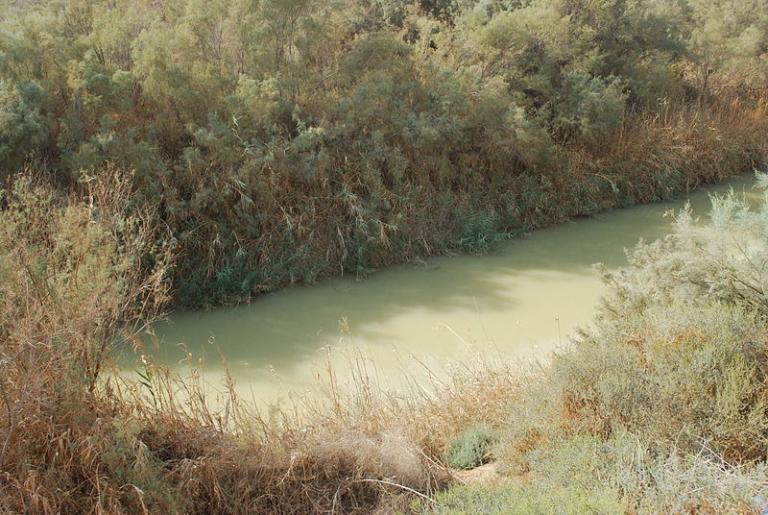
(Wikimedia Commons)
As I’ve noted, the Palestinian River Jordan isn’t very impressive, physically. We’re in a historical drought, of course, and enormous growth of population and consumption of water for agricultural and culinary use has made that drought even worse. Still, though, Mark Twain joked that, growing up an occasional church-goer along the Mississippi, he had imagined the Jordan to be fully 18,000 miles wide — and it was never that, nor anywhere close.
And yet it bears enormous significance, religiously and historically.
It marks most of the border between Israel and (what was once called Trans-) Jordan, for example.
More significantly, it was the entry way into the Holy Land for Joshua and the Israelites. Years ago, when I was serving on the Church’s Gospel Doctrine Writing Committee, one of the assignments that I drew was to create a lesson about the early chapters of the book of Joshua. I was struck by how many times in those early chapters Joshua was told — by his people, but also by God — “Be strong and of good courage,” and that the Lord would be with him as the Lord had been with Moses.
It struck me how inadequate to the task Joshua might have felt himself to be. He had been a loyal and reliable follower, but now the titanic, transformative Moses was gone, and he, Joshua, was supposed to fill those shoes. I would imagine that he badly needed reassurance.
When his people came to the River Jordan and the flow of the river stopped so that the people could cross over on dry ground, that was an unmistakable sign, hearkening back to Moses and the escape of the Israelites across the Red Sea, that the Lord was indeed with Moses.
For centuries now, the Jordan has represented the boundary between the profane space of the Edomites, the Moabites, and the Ammonites, and the sacred space of the Promised Land.
In the old “negro spirituals” of American slaves, it came to represent passing from this life through death to salvation. “I looked over Jordan, and what did I see? A band of angels, comin’ after me. Comin’ for to carry me home.”
For Mandaeans, in relatively distant Iraq, ritual immersions must be performed in a “Jordan,” in imitation of John the Baptist, whom they revere as the founder of their non-Christian, Gnostic sect.
Jesus, of course, was baptized in the real Jordan, likely very close to where we crossed. And our own rite of baptism, too, probably reflects his. It should, we are told, be performed below the places where “the living are wont to assemble,” and his was performed at or very near the deepest spot on the face of the Earth. Symbolically, it represents descent into death and subsequent resurrection to glorified life.
Posted from Tel Aviv, Israel










